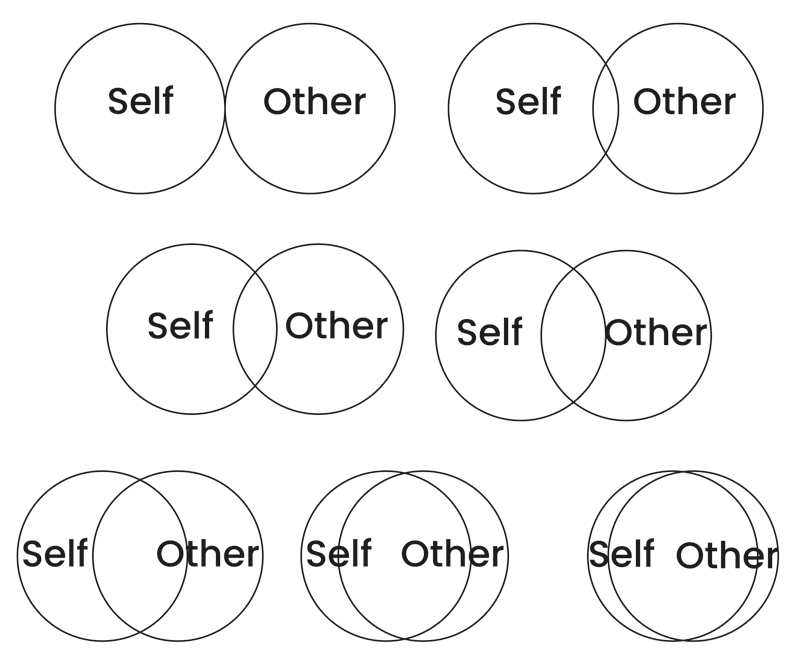The inclusion of other in self
Given the parallels between real world relationships and our relationships with fictional characters, Shedlosky-Shoemaker, Costabile and Arkin (2014) proposed the idea that self-expansion might also be possible through our relationships with fictional characters. In a series of studies, the researchers measured cognitive overlap between people’s sense of themselves and the characters they read about using the ‘inclusion of other in self scale’, which was developed by Aron, Aron and Smollan (1992). This picture below is the measure that Aron et al. developed and that shows various differing degrees of cognitive overlap of the self and the other. If you were asked to use this scale, you would be asked to circle the picture which best describes your relationship (i.e. how the degree of overlap between yourself and another person) from the seven options shown.
This simple visual representation is one you can use to think about your own relationships. If you are in a close romantic relationship with someone you might feel it is best depicted by the sixth or seventh images where the self and the other person are almost completely overlapping. Your relationship with a colleague at work might be more at the opposite end of the scale, depicted in the first or second image on the top line, where there is a much clearer separation of your identities.
Shedlosky-Shoemaker et al. asked participants to select the set of circles they felt best represented their relationship with the fictional character, to measure the degree of cognitive overlap. They also measured ‘self-expansion’ via a short questionnaire which asked questions such as ‘Reading about the character has helped expand my sense of the kind of person I am’ (2014, p. 561). Their results suggested that just like with real people fictional characters did offer readers the opportunity for self-expansion. They also found that with books this effect was mediated by transportation into the text. They viewed transportation as a form of ‘para-proximity’ (2014, p. 559). The more transported into the story world readers felt, the greater cognitive overlap they felt with the character, and the greater perceived self-expansion they felt. This study again supports the importance of transportation (or para-proximity) into the story world as being a vital part of any changes in the self.

